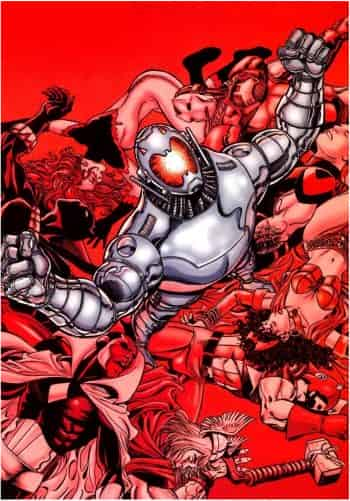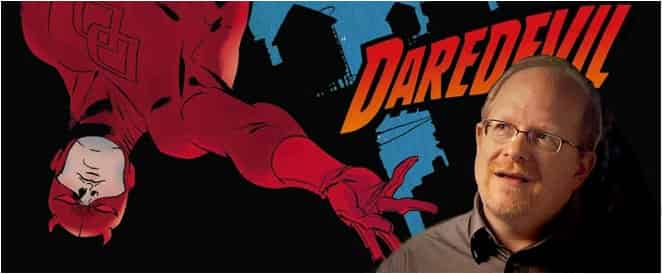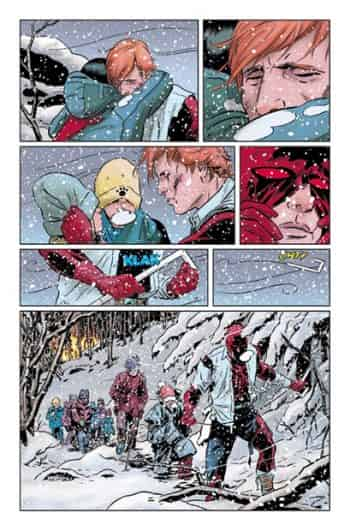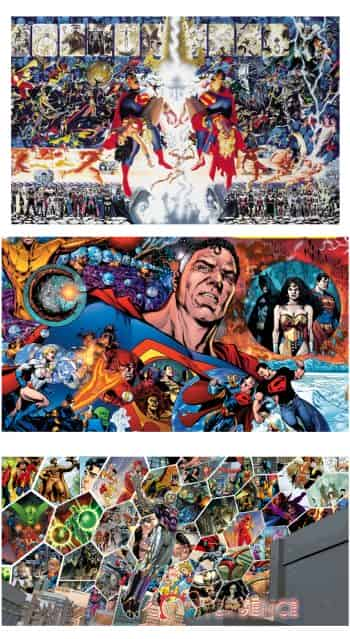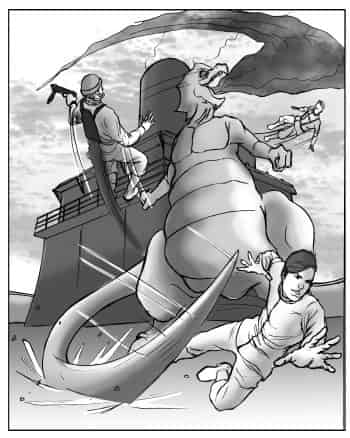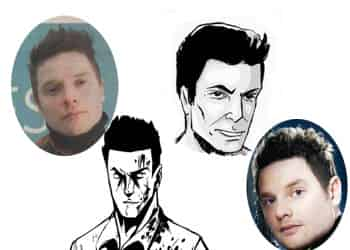Bonus
-
The temptation to be pompous—Part II
Joss Whedon said that emotions were the main thing at stake in his movie Avengers: Age of Ultron, and that his source of inspiration was Godfather II. Joss Whedon’s track record is far too impressive for us to be giving him advice. But, if emotion is the main thread, then there was already a goldmine available within the story line itself, in the issue of descendants. Black Widow can’t have children because of her training. Neither can Bruce Banner, but for different reasons. Ultron considers Tony Stark his father, and Vision is in a way, his son. The Avengers stories that inspired the movie (Ultron Unlimited, Avengers vol. 3, issues 19-22) showed Ultron trying to collect a variety of mental schemas to recreate an artificial lifeform, where different points of view could be shared. In sum, we feel the film could have gone into greater depth of feeling instead raising the bar with the physical challenges needing to be solved (saving the world, again).
-
The summit of Mark Waid’s art
Our admiration for Issue 7 of the Daredevil series, written by Mark Waid, is boundless. And Dylan Routledge feels the same: “I’d also love to give a special shout out to issue 7 that pops up in the second volume of Waid’s Daredevil run as it is simply not only one of the best single issue of his run, but potentially one of the best Daredevil issues ever AND one of the best single issues to have been published in the last five years.” Dylan Routledge, “The Weekly Challenge: Mark Waid,” http://www.comicbookdaily.com, October 12, 2015).
We would describe this story as Daredevil vs. the snowstorm. We consider it the peak of an orientation taken by a few writers to bring superheroes back down to human scale, in terms of the trials they face. This doesn’t mean that these challenges can’t be life-or-death, but they don’t need to have intergalactic implications.
For this post, we did some research to find reviews of Issue 7. Christine Hanefalk uses the word charm to describe it and adds, “Amazingly, the story never goes into too sweet territory.” (“Review of Daredevil #7,” http://www.theothermurdockpapers.com, December 22, 2011). Waid plays with clichés without ever stumbling. He draws from the character’s personality. “Mark Waid takes established elements, like the difficulty Daredevil’s radar sense has with a snow storm, and uses them to create a daunting set of obstacles for the characters to survive.” (Wed, “Review of Daredevil #7,” http://www.comicbookresources.com, December 21, 2011).
We naturally also found negative reviews—and even some very negative ones. We decided not to cite them here, not to censor an opinion—because interested readers can find them easily—and not to glorify the author either. We’re not doing a literary analysis of all of Waid’s work on Daredevil. Our goal here was just to express our admiration for him and for this issue, and the story developed in it.
-
The temptation to be pompous—Part I
In superhero films or their comic book equivalents, there’s always a temptation to outdo the previous chapter. Russ Burlingame sums it up like this: “Each new film has to be bigger and bigger… [so] that the Marvel Studios films are spectacular adventures, but that they ultimately are so filled with spectacle that there isn’t a ton of room for story.” (“Is Captain America: The Winter Soldier the Best Marvel Movie Yet?”, http://comicbook.com, April 6, 2014). Along the same lines, Joe Casey says these huge-scale events leave increasingly less substance for readers—“less and less thematic resonance” (“CR Sunday Interview: Joe Casey,” http://www.comicsreporter.com, February 16, 2014). Mike Gold also points out the redundancy problem, when the consequences of these events are quickly fixed in the ensuing stories: “over the past 30 years the DC fans have learned one and only one thing: we cannot trust DC to sustain a thought.” (“What Goes Around Inevitably Comes Around,” www.comicmix.com, September 10, 2014).
SauronsBANE elaborates on this theme, offering a few suggestions. “Of course, a proper sequel really should improve upon the 1st film… by raising the stakes. Unfortunately, I believe too many filmmakers get caught up in trying to raise the scale. See the difference?
On one hand, you can have an effective sequel that successfully manages to make things matter more. There’s more at risk if the hero should fail. Indeed, by raising the stakes, the natural result is that drama, conflict, and tension all become heightened as well. Of course, that naturally leads to a more entertaining, emotionally resonant film that’s easy to get invested in. This is basic filmmaking 101.
“But on the other hand, by only raising the scale of things in a sequel, it just leads to a series of movies that steadily progress from something as superficial as city-wide threats, to nationwide threats, to planet-wide threats, and possibly even universal threats. This may seem like a legitimate way of doing things in film, but I can pretty much guarantee that there is no better way to ensure that a series of movies become as boring, repetitive, cliché, and unoriginal as possible.” (“Top 3 Worst Hollywood Trends,” http://www.comicbookmovie.com, July 8, 2015).
In our opinion, Cap’s latest film, Captain America: Civil War, provides stakes that have depth rather than just size. At the film’s end, we see a superheroes clash, but not to save the world: it’s because one of the protagonists wants to avenge the death of his loved ones.
Without stretching the comparison too far, after the confrontation that happened in the Arctic in the Apatrides story, which featured a lot of players and a larger-scale deployment, we shifted back to more circumscribed stories. We did this for two reasons: To keep upping the ante with ever-larger stories is not viable, in that the element of surprise is lost for the reader. And, also, these events have to be led up to. You can’t just pull them out of hat.
-
Where does that character come from? The example of Jason
-
Tips for writing women
Writing for a female character can be a stumbling block for some male writers. But we recently found inspiration in this tip from Janelle Asselin (“Great Writing Advice: Learn To Write Women Like They’re Human Beings,” http://comicsalliance.com, March 5, 2015). Her advice was a revelation, even though it’s surprisingly simple:
“Have enough women in the story that they can talk to each other. The lack of women talking to each other is the most frequent criticism I have of writers writing women (especially male writers). Pay attention to the fact that women DO talk to each other. Create opportunity for women characters to talk to each other. Check to see if you-as-writer are missing chances to have women talk to and interact with each other.”
This comment made us rethink the future of some characters, especially Liane. She was initially going to die after a suicide attempt, but our decision to replace Benson with a female team leader created an opportunity to deepen the dynamics between women.



